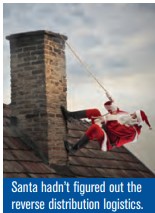It’s rare to find a set of market circumstances that affect the whole world in the way that 2020 has seen. Looking back over the past nine months it is remarkable to see how much changed. Now is a good time to review those changes and to consider what lies ahead.
In terms of market segments for the refrigeration business, there has been a big downturn in prepared foods for restaurants and other hospitality outlets as their trading levels have plummeted. The path to market has changed but people continue to eat, so the distribution network has been less affected. We see more online trading which will speed up the development of “last mile” distribution, but in reality this shift was already happening before COVID-19 appeared so it is simply accelerating the change. Cold chain logistics companies have had to find new ways to ensure continuity of supply. In some cases this has meant reducing the number of product lines handled in order to smooth out variances in the supply chain.
It is incredible to realize that when the pandemic was declared the cold chain saw a spike in demand that exceeded Thanksgiving and Christmas combined and had virtually no prior warning. After the initial rush was over there was a distinct shift towards frozen food. This appears not to have been a “flash in the pan” and has led to some capital investment in the cold chain, particularly for frozen food.
In the building services segment, served by large water chillers or direct AC units, the picture has been less rosy. The massive shift to “working from home” has left many office buildings significantly under-used. As we have moved into winter in the northern hemisphere, those who are still commuting to an office face the challenge of building services systems needing to be used in new ways. Providing a very high fresh air ventilation rate during winter to a sparsely populated office with less equipment load than normal to ensure a “COVID-safe”
workplace is exceptionally challenging and it is certain that many systems are unable to cope with this scenario. This will give further force to the argument for making working from home the new normal.
Some sections of building services are booming, particularly flexible data centers offering short term support to the new pattern of work. Online shopping is also booming, together with the huge increase in “reverse distribution” of returned goods. In 2019, before the pandemic was even forecast, up to 40% of apparel bought online was returned, compared to 9% bought in-store. Since the start of restrictions online sales have more than doubled and the volume of returns has jumped. Retailers are struggling to cope with this drain on their business, particularly as returned goods need more careful “decontamination” before they can be resold.
So what will 2021 bring? We are not likely to see a mass return to commuting and office working. This has implications for all of us in our own work life—the best you can do is embrace the change and make the most of it. These changes have huge implications for the commercial buildings market where over-capacity of office real estate could have a devastating effect on speculative development, only partly counteracted by upswings in the IT segment.
For food and apparel distribution and retail, the move toward online shopping will continue and the successful players will be those who adapt best to the new rules, including innovative ways to incorporate returns. Hopefully this is not the holiday season that breaks the reverse distribution chain.

